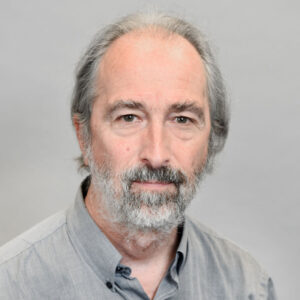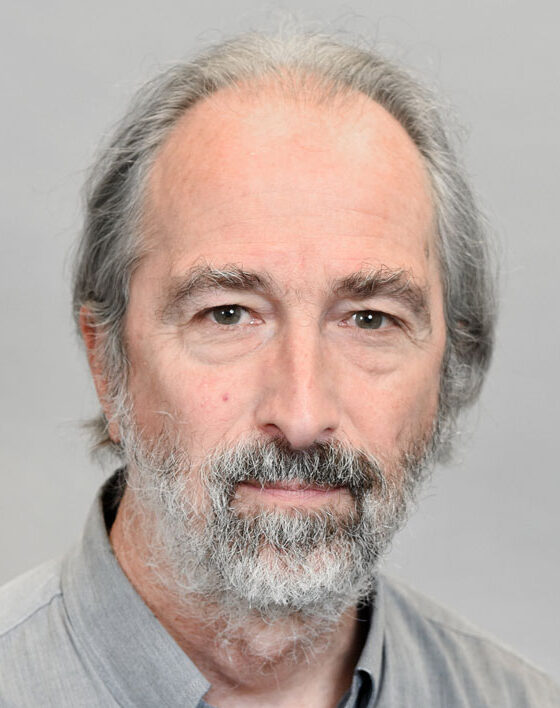
Ever since Charles Darwin proposed the idea of natural selection in 1858, biologists have been pondering exactly how selection works, somehow driving the evolution from single-celled life to the wide array of complex vertebrates that now populate the planet. As advances in technology have enabled genomic mapping at increasingly finer resolution, the questions have only deepened. How could natural selection, “survival of the fittest,” allow for so much duplication and seemingly unnecessary stretches of DNA seen in vertebrate genomes? Why haven’t the forces of evolution created a lean, sleek genomic masterpiece?
By combining population genetics with quantitative genetics, Michael Lynch has made remarkable progress toward answering these questions. He’s shown that natural selection is just one of several mechanisms driving evolution, and that much genomic complexity arose “passively” through an accumulation of random changes that nature couldn’t eradicate. His ideas have ruffled more than a few feathers in the evolutionary biology world, but his paper on genetic subfunctionalization, or how duplicated genes acquire new functions, became one of the most-cited GENETICS papers of all time. He authored the seminal text, Origins of Genome Architecture, and now he’s working to found a new field, evolutionary cell biology.
“Michael Lynch is a pretty amazing individual,” said Chris Amemiya of UC Merced. “He’s been a real driver of a lot of science in this country.”
For his accomplishments, Lynch has been awarded the 2022 Thomas Hunt Morgan Medal for lifetime achievement in the field of genetics from the Genetics Society of America.
Comparing proteins, comparing genomes
Lynch started out as an ecologist, but after switching into population genetics and quantitative genetics, he became interested in applying the concepts of these fields to natural populations. “It started out at a pretty crude level,” he recalled, before the widespread availability of DNA sequencing. To identify genetic differences, the team looked for differences in proteins. “We were doing what were called allozyme gels, for protein variants, which was pretty neat. It gave us a first glimpse of variation. But it was a real art form.”
The rise of fast, cheap DNA sequencing enabled scientists to interrogate genomes at the individual level at unimaginable depth. “We could go beyond just speculating,” Lynch says. “I started developing models for understanding how genome complexity evolves, particularly how we can passively evolve in a domain where we have more and more complex genomes, even though that’s not pushed forward by natural selection.”
The common understanding of Darwinian evolution is roughly as follows: random mutations lead to variation within a population, and occasionally a mutation will arise that confers its bearer with a reproductive advantage. Natural selection is the process by which these beneficial mutations outcompete their less-advantageous counterparts. Over millions of years, this process leads to species becoming exquisitely adapted to their particular ecological niches. As so often happens in biology, however, this explanation omits quite a bit.
Genome complexity can arise passively, without selection
Some mutations are mild enough that selection pressure can’t stop them from accumulating, Lynch explains. “The messy genomes of big clunky vertebrates and land plants are not due to the fact that everything’s driven by refinements by natural selection,” he says. “It’s a consequence of the inability of selection to eliminate what would ordinarily be viewed as bad changes in the genome.” Introns are one example of this, he points out. For every additional base pair a chromosome accumulates, the organism has to spend more energy to maintain and replicate that lengthened genome, and yet the genomes of complex organisms are stuffed with sequences that never make it into a finished protein.
“One quite influential piece of work that came out of the very earliest days was our work on gene duplication,” Lynch says. In their groundbreaking paper, Lynch and graduate student Allan Force showed how mutations in different regulatory elements of duplicated genes allow both copies of the gene to be retained and, eventually, lead to divergent gene functions. This contradicted the prevailing idea that when a gene is duplicated, one copy eventually accumulates enough mutations that it either degenerates or, in rare cases, acquires a new function.
“This was 1998. We’d hardly had any genome sequences yet; that was just starting to happen,” Lynch said. “I think we were in the right place at the right time. Prior to that point, people knew genes were duplicating, but we had no idea how common it was.”
Lynch and Force realized that duplicate genes were far too common for every new duplicate to have acquired a completely new function. In their paper, they argued that if the original gene had multiple functions governed by different regulatory elements in different types of cells—for instance, the head and thorax of an insect—that modularity could allow the duplicate gene to diverge via mutations in the regulatory element. “What can happen is one loses its ability to be expressed in head, and the other gets complementary degenerative mutations, and it can’t be expressed in thorax,” said Lynch. “Nothing’s changed dramatically, biologically. But you’ve made a more complex organism.”
The Center for Mechanisms of Evolution
In 2017, Lynch moved to Arizona State University to launch the Biodesign Center for Mechanisms of Evolution. “We’re trying to grow a new center with six new faculty, plus me, all focused on trying to understand evolution at the cellular level,” Lynch says. “We’re trying to integrate biochemistry and biophysics into this mix as well, to come up with a comprehensive view of how cellular features evolve, or don’t evolve. What are the constraints—what prevents cells from going down a certain route?”
Lynch calls evolutionary cell biology “the last missing link,” pointing out, “There’s an amazing field of cell biology; everything’s done in exquisite detail at the molecular level. But there’s no real evolutionary biology in cell biology.”
“This unique Center promises to diversify the field of evolutionary genetics into new avenues of inquiry,” write Bill Bradshaw and Chris Holzapfel, who nominated Lynch for the medal. “This diversification will lead not only to greater insight into the genetics of evolutionary processes, but also into medically important areas of genetic disorders. Under Lynch’s direction, the Center will produce a new generation of forward-looking geneticists firmly rooted in integrative and transformational research.”
Indeed, Lynch has long championed integrative research, says Amemiya. “He’s got his hand in a lot of things, not only in genetics, but also in developmental biology and ecology. Some of these principles, I think, have been percolating for a long time, and he was able to bring these kinds of ideas into the fore.” Lynch has served as president of multiple scientific societies, including the Society for the Study of Evolution, the American Genetic Association, the Society for Molecular Biology and Evolution, and, of course, the Genetics Society of America. “He’s been an amazing advocate for interdisciplinary science,” Amemiya says.
The Thomas Hunt Morgan Medal recognizes individual GSA members for lifetime achievement in the field of genetics. Recipients have made substantial contributions to genetics throughout their careers and have a strong history as a mentor to fellow geneticists.














